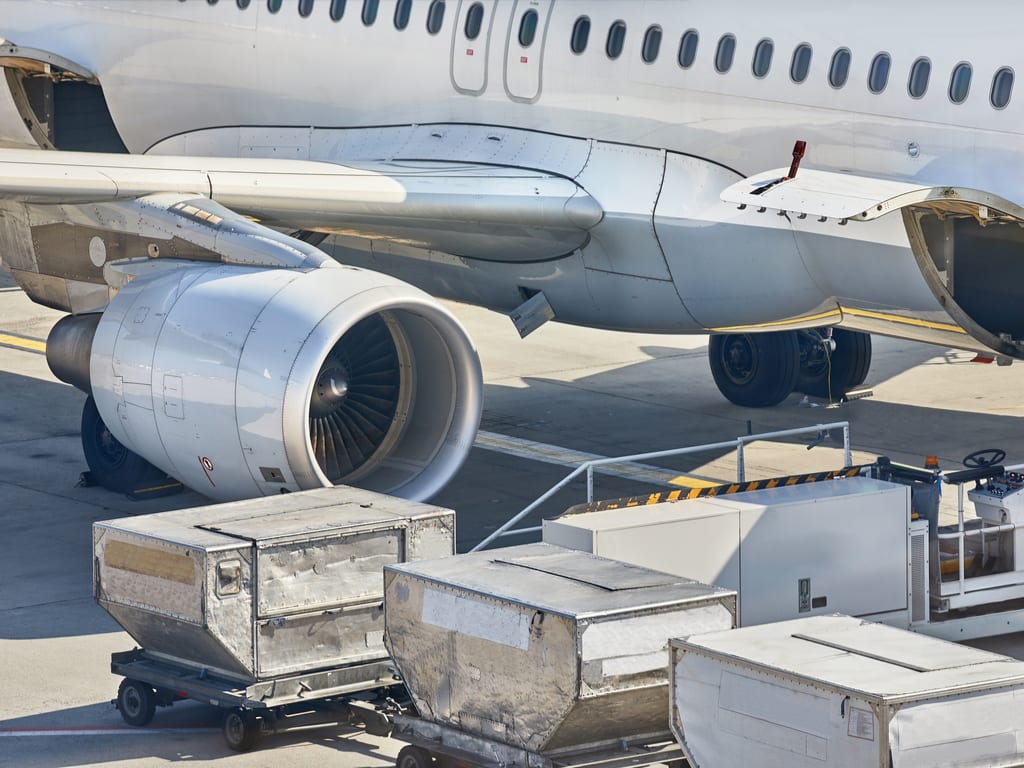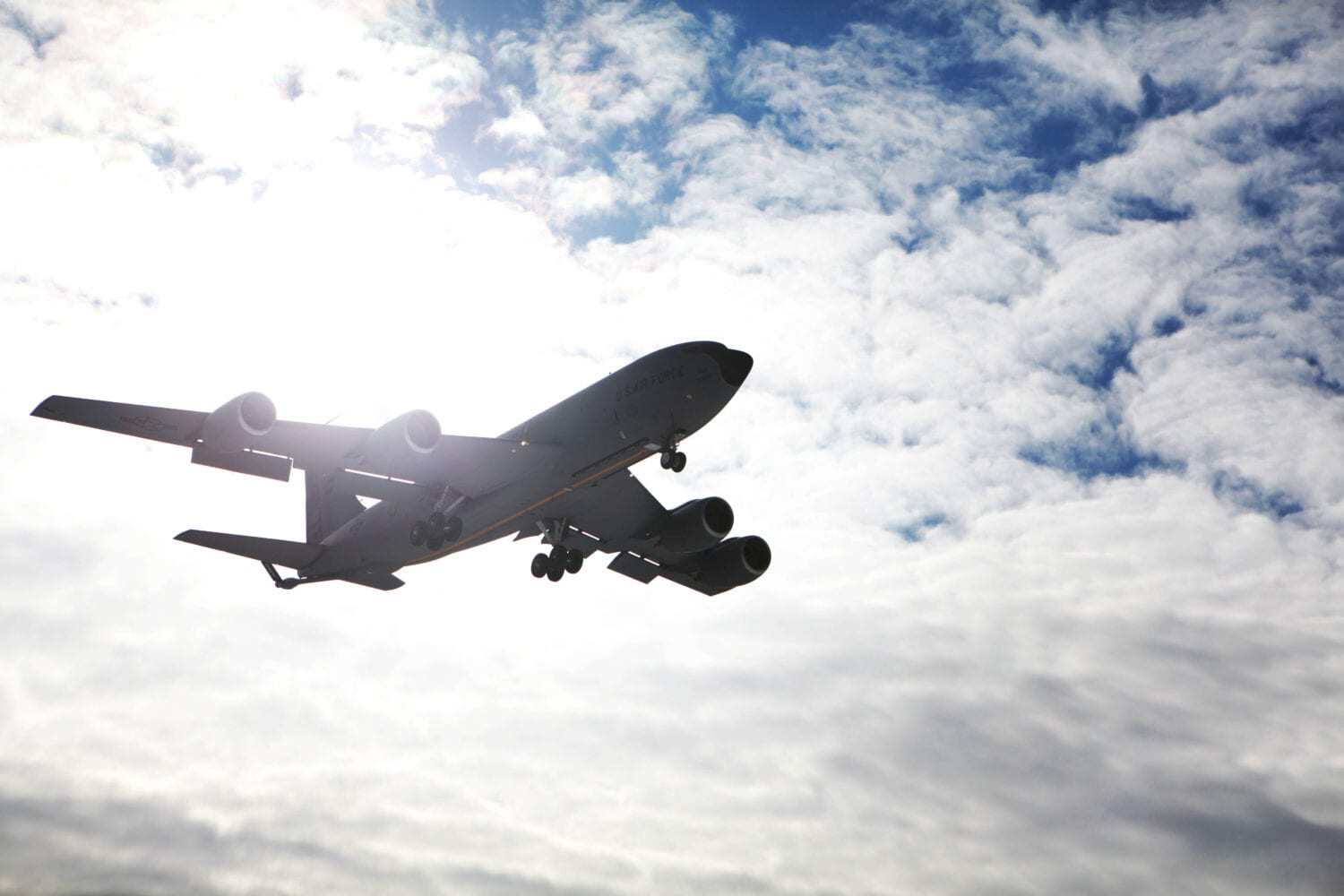
Living abroad has always been a dream of yours, and now you’ve decided to make it happen. Or maybe you’re preparing a relief shipment to a remote location. Regardless of your reason, you know that you have more to get to your destination than would be allowed in normal luggage situations. Now you’re wondering how you’re going to solve this part of the puzzle.
Can you air freight a container? Absolutely. Individual air freight containers are usually 6’ 6” long, 6’ 6” wide, and 5’ 2” high. For comparison purposes, the smallest enclosed U-Haul trailer is 8’ 1” long, 4’ 1” wide, and 4’ high. The air freight container has nearly twice as much storage space as the smallest enclosed U-Haul trailer. These standard air freight containers are much smaller than the storage containers you see on freight trains or semi-trucks.
Now you know that you can ship a designated freight container via air transport, but… how do you get it done?
How Do I Air Freight a Shipping Container?
You may be wondering, “Do I have to hire a specific air freight company? Do domestic airlines provide air freight services? How do I get information on this process?”
You have options. Depending on the amount and size of the freight you are shipping., you may be able to send it on the same airplane you are flying on. That said, depending on your destination, it may be wise to ship it ahead of time to avoid customs delays.
Individual containers are packed en masse on pallets. If you have multiple containers to ship, make sure you are prepared to clearly label them, indicating to whom it belongs and which container of how many it is (for example: container 3 of 5).
The three typical methods of air freight transportation are:
- Freight that hitches a ride on passenger airlines.
- Freight that is shipped via cargo planes dedicated to this purpose.
- Huge and extremely heavy cargo (think military tanks) that hitch a ride on supercargo planes.
Passenger Airlines
Have you ever wondered why airlines limit your baggage, and if you decide to bring extra, they charge through the roof? The reason for this is they use a percentage of the cargo space on any given passenger flight to haul cargo. This is one way the mail gets from one side of the country to the other.
Passenger airlines use this process to supplement their income. Granted, it’s only about 10% of their overall revenue, but when a business runs on slim margins, every little bit counts.
To arrange shipping on a passenger flight, you need to contact the airline to get their specific parameters, requirements, and rates. Some passenger carriers also have specific cargo planes for these purposes.
Cargo Airplane Companies
Depending on how many crates or pallets you are planning to ship, you may need to look into a specific cargo carrier to keep your shipment together on the same flight.
In addition to the cargo planes the passenger airlines run, there are also several cargo shipping-specific companies that run this kind of business.
Rates vary based on what you are shipping, time sensitivities, how heavy your shipment is, and how far your shipment is traveling. Just as you can ship packages through UPS, FedEx, and DHL, they also have air cargo services.
There are even air stables available for your prize stallion. Just as there are requirements for housing domestic dogs in the cargo hold, there are specific conditions you must follow to make sure your horse is cared for.
Shipping Restrictions
It won’t come as any surprise that because of the atmospheric pressure changes that happen during a flight, there are items you absolutely can’t ship. The FAA has mandated that Dangerous Goods cannot be shipped. Items that are considered “dangerous goods” may include but are not limited to:
- Explosives – Ok, this is obvious. Dynamite, grenades, and fireworks are included here, as are things like detonating caps and fuses
- Gases – Oxygen tanks, propane or butane cylinders, dry ice, fire extinguishers, among others
- Flammable liquid – Again, gasoline seems pretty obvious here, but have you thought about air fresheners, insect sprays, and paint?
- Flammable solids – Safety matches are an example here, so is activated carbon.
- Toxic and infectious items – Pesticides and lithium batteries, to name a few
- Corrosive Items – alkaline batteries
- Magnetic substances without degaussing packaging – Bare magnets, for instance
- Items dangerous to public health – Untanned animal hides, untreated animal or human remains.
- Oxidizers, organic peroxides, radioactive materials, and corrosive items – chemical medicines and lab chemicals
- Powder, liquids, pastes, and other items with a “danger” sign on their label/packaging.
- Biochemical products and infectious materials of all kinds – dangerous pathogens, etc.
Anything longer or wider than 6 feet 9 inches long or wide needs special packaging, so it doesn’t flex and break in transit. Make sure any open area is securely packed to avoid shifting in the packaging.
Check with your freight shipping company for their specific requirements.
Shipping Options
Air freight is not an inexpensive option. One way to save money is to allow your items to be combined on a pallet with other shippers. This is the same concept that moving companies use when they use one large moving van to move multiple households in the same trip.
You can choose to have your items shipped on their own pallet, but it becomes more expensive for you because of what the carrier considers to be wasted space they have lost.
Sea Freight
If you have the time and flexibility, shipping via cargo ship is a somewh
at more affordable option. That said, there are still requirements that must be met.
When you begin investigating options, make sure you are only looking at reputable companies with strong ratings. Some things you should consider are:
- How long has the company been in business?
- To what countries has it successfully shipped goods?
- How deep (and current) is their knowledge of the compliance requirements for the country you’re shipping to?
- What are their customer reviews like?
- Have they had any customs disputes?
- Are they current on their compliance shipping forms? (You will have to provide a significant amount of information to ship your goods.)
- What is their insurance policy?
- Will they provide you an itemization of the various fees involved? (If they say no and aren’t willing to provide this level of transparency, this is not a reputable company.)
- Have they been assessed any fines as part of transporting goods?
- What is their on-time guarantee?
- What type of storage fees are they likely to charge?
Land Freight
If you are working on getting your goods from one part of the continent to another, shipping via a trucking company could be another option for you. You will still need to get much of the same information you would want for any other shipping process, especially if you are shipping across international lines.
Regardless of the initial freight delivery method (air, sea, or land), you are likely to need land freight services to get your freight container to your final destination.
Get Packing!
It doesn’t matter how you decide to get your precious cargo to your new destination, you’re still going to need to decide what you’re going to take and exactly how you want to protect it as you pack.
This can be an exhausting process, but it can also be extremely exciting. Set your eyes on your goal and your new adventure. Once you have your container (or containers) packed, you will be able to focus on what things will look like once you and your belongings get where you’re going.



